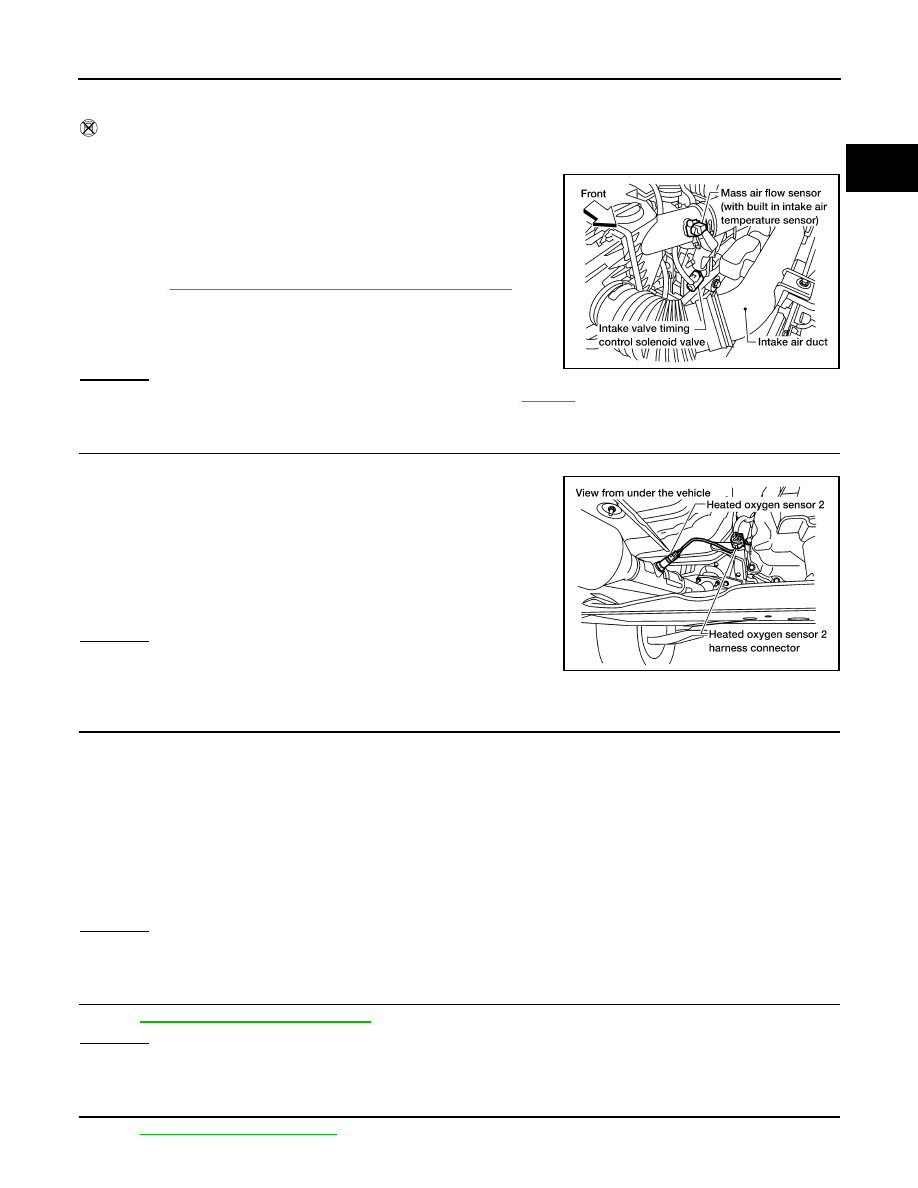Nissan Frontier D40. Manual - part 366

P0137 HO2S2
EC-155
< COMPONENT DIAGNOSIS >
[QR25DE]
C
D
E
F
G
H
I
J
K
L
M
A
EC
N
P
O
Is the 1st trip DTC P0171 detected?
Is it difficult to start engine?
Without CONSULT-III
1.
Start engine and warm it up to normal operating temperature.
2.
Turn ignition switch OFF.
3.
Disconnect mass air flow sensor harness connector, and restart
and run engine for at least 5 seconds at idle speed.
4.
Stop engine and reconnect mass air flow sensor harness con-
nector.
5.
Make sure DTC P0102 is displayed.
6.
Erase the DTC memory.
Refer to
EC-47, "Emission-related Diagnostic Information"
.
7.
Make sure DTC P0000 is displayed.
8.
Run engine for at least 10 minutes at idle speed.
Is the 1st trip DTC P0171 detected?
Is it difficult to start engine?
Yes or No
Yes
>> Perform trouble diagnosis for DTC P0171. Refer to
.
No
>> GO TO 3.
3.
CHECK HO2S2 GROUND CIRCUIT FOR OPEN AND SHORT
1.
Turn ignition switch OFF.
2.
Disconnect heated oxygen sensor 2 harness connector.
3.
Disconnect ECM harness connector.
4.
Check harness continuity between ECM terminal 78 and HO2S2
terminal 4.
Refer to Wiring Diagram.
5.
Also check harness for short to ground and short to power.
OK or NG
OK
>> GO TO 4.
NG
>> Repair open circuit, short to ground or short to power in
harness or connectors.
4.
CHECK HO2S2 INPUT SIGNAL CIRCUIT FOR OPEN AND SHORT
1.
Check harness continuity between ECM terminal 74 and HO2S2 terminal 1.
Refer to Wiring Diagram.
2.
Check harness continuity between ECM terminal 74 or HO2S2 terminal 1 and ground.
Refer to Wiring Diagram.
3.
Also check harness for short to power.
OK or NG
OK
>> GO TO 5.
NG
>> Repair open circuit, short to ground or short to power in harness or connectors.
5.
CHECK HEATED OXYGEN SENSOR 2
EC-156, "Component Inspection"
OK or NG
OK
>> GO TO 6.
NG
>> Replace heated oxygen sensor 2.
6.
CHECK INTERMITTENT INCIDENT
GI-46, "Intermittent Incident"
.
BBIA0622E
Continuity should exist.
BBIA0613E
Continuity should exist.
Continuity should not exist.